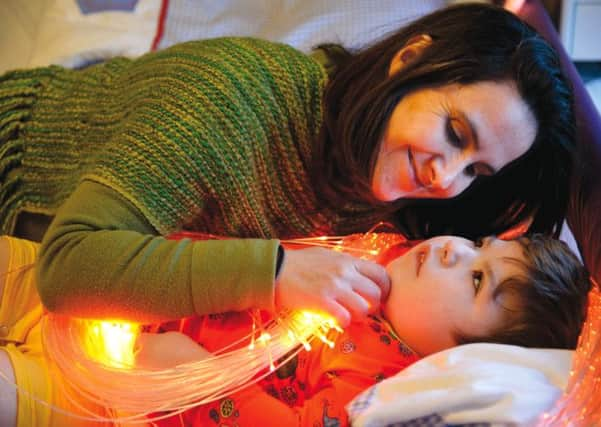Mother’s clothing line for special needs children


Claudia Romero, from Edinburgh, discovered that there was only a limited range of garments available for special needs children after the birth of her son, Christian, who has DOOR syndrome, a rare genetic disorder which means he cannot walk and has no control over his body.
“I started looking on the internet for clothing that could change easily, but I could not find anything nice,” said Romero, who also has two other sons.
“A lot of it was very plain and like underwear really.”
Advertisement
Hide AdAdvertisement
Hide AdFrustrated at the limited variety available on the market, Romero started adapting Christian’s clothing and designing new garments herself, and received compliments on her work from Christian’s carers.
Spurred on by the positive feedback about her son’s clothes, Romero has now teamed up with a friend, fashion designer Bernardita Reyes, to form new clothing company, CAPR-Style, that aims to strike a balance between style and function.
Assisted by the Edinburgh arm of start-up support group Entrepreneurial Spark, they will launch later this month.
The online store will sell a range of T-shirts, trousers, dresses and jumpers individually customised for each user’s needs. All of the clothing will be made in Edinburgh by a small team of seamstresses that Romero and Reyes have put together.
Romero is promising appealing yet practical garments at only a slight premium to standard high street prices, a major consideration for many parents of special needs children.
Studies have estimated that it costs three times more than average to raise a disabled child. Much of this is linked to the extra expense of transport and specialist clothing, food and equipment.
Elaine Glyn of South Lanarkshire has a particularly difficult time finding jackets for her oldest daughter, Zara, whose disabilities confine her to a wheelchair and harness.
She knows of others who overcome this problem by taking standard jackets and cutting them up the back, allowing the jacket to be put on from the front. It is one of dozens of DIY alteration tips available from various online sites that are testament to the difficulties of getting the disabled dressed.
Advertisement
Hide AdAdvertisement
Hide AdGlyn has not tried this particular tactic and keeps hunting for something that would be suitable with less drastic intervention. However, more often than not Zara ends up “with a kind of fleece on, rather than a nice pretty jacket”.
Trousers for an 11-year-old like Zara are not made to accommodate a nappy. They must be purchased a few sizes too large, leaving the legs too long and an excess of material elsewhere.
Buying clothes can be stressful for parents like Glyn, who wants Zara to be as nicely turned-out as brother Jamie and sister Karla.
“There are some clothes out there for children with additional needs, but they are not particularly nice,” she said.
“I want her to look her best. I most certainly don’t want two of them to look lovely and the other one to be wearing just anything because she is in a wheelchair.”
She added: “A lot of parents like me have had to give up work to look after their children, so most of us don’t have excess money lying about.
“It will have to be competitive, but it is a fantastic idea. It would make life so much easier.”
At the age of five, it can take 15 to 20 minutes to get Christian dressed. Because he wears a nappy, his clothing will be on and off several times a day.
Advertisement
Hide AdAdvertisement
Hide AdBy the time he is 17, Romero expects it will take two people as long as half an hour to dress her son. Adaptive clothing is not an option, but a necessity.
“Any time you save on that is time for doing other things with the children,” she said. “It is quality of time and quality of life, and you also reduce the chance of injuries.”
Romero said a CAPR-Style T-shirt will likely cost about £2–£3 more than its standard equivalent, while the company’s adaptive trousers will be priced at about £23. The website will include visual aids and instructional videos on how the clothing is best used and cared for.
“Word of mouth has been increasing, so people are increasingly expecting to find this kind of clothing out there,” she said. “It is something appealing, but it also solves the problems of the parents and the carers.”